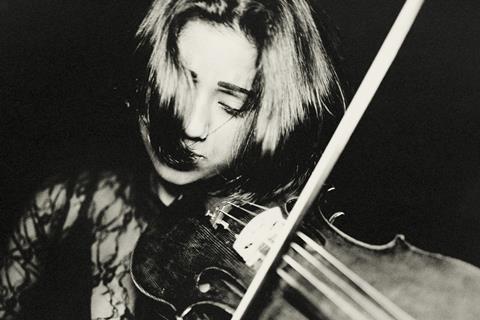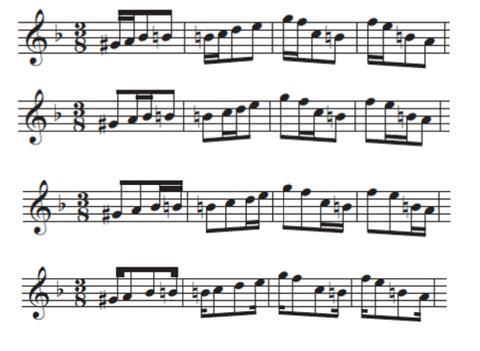Changing up rhythm and metre are great ways to get that fast passagework down, writes violinist Susanna Klein

Read more Technique articles like this in The Strad Playing Hub
Dotted rhythms are a great tool for drilling fast passages, but you can level up and do more complex rhythm practice. That’s because playing fast is very different from playing slowly - physically, neurologically, and psychologically. Keeping hands coordinated in the fast lane is tricky. Read last week’s article 6 Tips for practicing fast passages to find out about the important principles of fast playing. Then, let’s play detective by using rhythms in practice.
Before we dive in, here are the mantras for practising in rhythms:
-
Concentrate on the ‘trio’ of fast: close, loose and fast
-
Aim for your best sound and make it super clean
-
Observe: which fingers are striking or lifting late?
-
Listen to the longer notes for sound quality and pitch
-
Aim for bouncy, light finger action
-
Correct, refine, and adjust within small units before adding additional bars
-
Enjoy the playfulness and the challenge. If it were easy, it wouldn’t be effective!
-
‘Seal’ your learning by following up rhythm practice with the original
Our original passage, for demonstration purposes, is:

Try these above-and-beyond rhythms. These finger twisters can feel very unnatural at first. Persevere - it will pay off!
1) Two fast one slow
These are my favorites from the Galamian 4 note rhythm patterns (from Contemporary Violin Technique, Volume One, Part 2). You will be rearranging simple time excerpts into a ⅜ time signature. Try each permutation at least twice in a row, and then go back to the original.

2) Re-beaming
Shift the metre so that different notes ‘live together’. For a passage that starts on the first beat, start an eighth note earlier. Put in rests that allow you to listen keenly. New groupings create automaticity in the brain and hand.

3) Groups of six
Another re-beaming option is to arrange your notes in groups of six. The landing note at the end serves as the next jumping off point, i.e. it is repeated.

Once you feel comfortable with the first permutation, rotate the starting note, for example like this:

4) Slurred quintuplets
Five-note groupings make notes flow, and slurring creates continuity. After this, the original will seem a lot easier.

Next, shift your starting note over by one note, and continue to do so until you have done all permutations.

If speed is on your wishlist, don’t forget to work in some fast practice in your scale work. Even though I am usually a fan of going ‘the speed of no mistakes,’ I have found that going a little hog-wild (every once in a while!) can help get the mind and fingers to be less resistant to the endeavor.
Looking for more tips? Check out last week’s article 6 tips for practising fast passages and my ‘speed’ playlist on YouTube: 13 Ways to Practice Fast Passages
Susanna Klein is associate professor of violin at Virginia Commonwealth University in Richmond, Virginia. She is the author of the Practizma Practice Journal and creator of the Practice Blitz YouTube Channel. Her mission is to empower musicians in the practice room.
Read: 8 ways to make practice playful: Susanna Klein
Read: Technique: Teaching rhythm and bowing to beginners
Read more Technique articles like this in The Strad Playing Hub
The number one source for playing and teaching books, guides, CDs, calendars and back issues of the magazine.
In The Best of Technique you’ll discover the top playing tips of the world’s leading string players and teachers. It’s packed full of exercises for students, plus examples from the standard repertoire to show you how to integrate the technique into your playing.
The Strad’s Masterclass series brings together the finest string players with some of the greatest string works ever written. Always one of our most popular sections, Masterclass has been an invaluable aid to aspiring soloists, chamber musicians and string teachers since the 1990s.
This year’s calendar celebrates the top instruments played by members of the Australian Chamber Orchestra, Melbourne Symphony, Australian String Quartet and some of the country’s greatest soloists.






































No comments yet